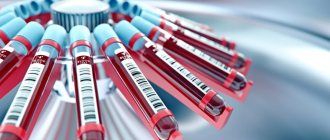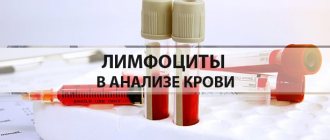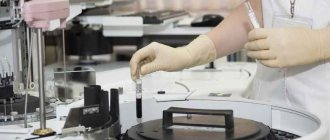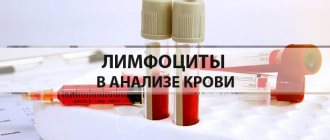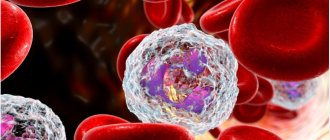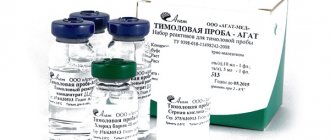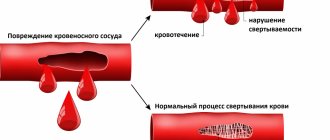APTT is part of an extended coagulation test, a test designed to examine the speed and quality of blood clotting. The abbreviation can be deciphered as activated partial thromboplastin time.
The study is prescribed to patients regardless of health status, as a diagnostic or preventive measure. Any deviations are clearly interpreted as pathology. Bleeding disorders cannot be natural, they are an anomaly. Apart from a couple of cases. If the indicators are changed, diagnosis and treatment are the prerogative of the hematologist.
A course of therapy is prescribed at the discretion of the specialist. Using the same method, the doctor checks the quality of the correction. When necessary, it changes the recovery scheme taking into account the dynamics. If the pathology does not have a genetic basis, the prognosis is favorable.
Detailed description of the study
APTT - activated partial thromboplastin time - a test to assess the state of the blood coagulation system. The study is carried out by adding substances to citrated platelet-poor plasma that help directly assess the functioning of plasma factors. They are proteins that play a key role in the formation of a blood clot.
The hemostatic system is a set of various mechanisms aimed at maintaining a balance between coagulation and anticoagulation factors in the blood. This avoids the pathological formation of blood clots (thrombi) or the tendency to bleed.
The formation of a blood clot (thrombus) occurs in several stages. A primary thrombus is formed by gluing blood platelets - platelets - to each other. Next, special proteins - coagulation factors - are included in the process. These proteins are produced in the liver. The result of their action is the conversion of prothrombin into thrombin under the influence of factor III (thromboplastin) and the formation of a secondary thrombus.
Activated partial thromboplastin time is the period during which a clot is formed in a test tube along with special substances that imitate the action of coagulation factors. The purpose of the test is to assess the state of the so-called intrinsic coagulation pathway (involving factors VIII, IX, XII, XI).
Prolongation of APTT in adults and children indicates hypocoagulation - a decrease in the ability to form blood clots. This increases the risk of bleeding. This can occur with hereditary and acquired defects in coagulation factors. Hereditary - hemophilia A and B, von Willebrand disease, hereditary factor XI deficiency. Acquired ones are caused by disruption of the liver, where coagulation factors are formed, exposure to anticoagulants, severe infectious diseases, and oncological processes.
The shortening of activated partial thromboplastin time reflects the predominance of hypercoagulation - increased blood clotting. A similar situation can be observed with thrombosis, including disseminated intravascular coagulation (DIC) syndrome in the hypercoagulation stage. Early diagnosis of coagulation disorders allows you to avoid serious consequences.
There are also physiological conditions under which a shortening of the APTT is observed—pregnancy.
The APTT indicator is used for monitoring during treatment with heparin in order to track the moment of excessive blood thinning. During myocardial infarction, the duration of clot formation determines the effectiveness of anticoagulant treatment, which indirectly reflects vascular patency.
Thus, determining the APTT helps to quickly assess the state of hemostasis, together with other data, suspect severe congenital and acquired diseases, and prescribe timely treatment.
Complexes with this research
Extended coagulogram Extended study of the functional state of hemostasis 4,150 ₽ Composition
Examination during pregnancy. 1st trimester 16,690 ₽ Composition
Miscarriage Identification of the main causes of miscarriage 40,070 ₽ Composition
IN OTHER COMPLEXES
- Coagulogram RUB 2,020
- Pregnancy planning. Clinical indicators RUB 6,630
- Female infertility RUB 16,210
- Examination during pregnancy. 3rd trimester 9,620 RUR
- Joining IVF RUB 23,020
Reasons for the decline
When the level drops, the blood becomes thick. It is highly likely that the body produces a lot of specific proteins.
Why is this happening:
- DIC syndrome at the first stage. A condition in which liquid connective tissue begins to randomly coagulate directly in the vessels. The pathology is hereditary or secondary, caused by hormonal disorders. There are exceptions.
Hypercoagulation, and therefore low aPTT, is typical only at the very beginning of the disease. Then the disorder turns 180 degrees, everything becomes the other way around.
- Thrombosis.
- Thromboembolism. In both cases, the drop in the indicator is the result of a secondary pathological process. And sometimes there is no connection at all.
There are also natural factors. Although some of them can be called that very conditionally.
- Exercise stress. Why this happens has already been said earlier. Intense release of hormones, loss of water. The amount of functional blood volume decreases, and cortisol and other steroids accelerate the synthesis of coagulation factors. The result is hypercoagulation. But this is a temporary phenomenon. A healthy body solves the problem itself and quickly brings the system back to normal.
- Errors in nutrition. Substances such as caffeine and tannin have a negative effect on the condition of the blood and blood vessels. They are found in popular drinks. However, as in the previous case, this is not dangerous. At least for healthy people.
- Stressful situations. They provoke an active release of cortisol and adrenaline. It is impossible to completely get rid of nervous tension, because the body. Sometimes symptoms persist for years. It all depends on adaptive abilities.
- Smoking. Patients with considerable experience are especially at risk. The body adapts to the negative factor, but it only seems so. In fact, a person simply stops noticing problems.
- Alcohol is no less aggressive. Ethanol causes hypercoagulation and thickens the blood. The process is complex. When the patient drinks regularly, the disorder becomes persistent. Doesn't go away on its own.
If the aPTT is low, this means that the blood is too thick and this situation is ideal ground for thrombosis. Without treatment, everything can end in disaster.
What it is?
You may be interested in:Hypokinesia is... Description, consequences, prevention, types and treatment
The APTT test is performed along with other diagnostic procedures to assess thrombosis and coagulation, as well as monitor the degree of effectiveness of heparin treatment.
Clotting is a vital process that is responsible for preventing major blood loss. Normal clotting time reflects the effective interaction of elements during thrombus formation.
The coagulation cascade, that is, the order of activation of blood clotting factors, has two ways - internal and external. The external pathway is characterized by the release of tissue factor, the internal pathway triggers the formation of a blood clot inside the vessel.
You may be interested in: Pancreatic amylase: normal level in the blood, reasons for the increase, possible diseases
Many people are interested in what the APTT rate is.
How to increase APTT
To increase APTT, the following techniques are used:
Anticoagulant therapy:
- heparin medications, Pradaxa, Clexane;
Pradaxa
Clexane - taking medications of the fibrinogen group - Warfarin;
Warfarin - taking antiplatelet agents - medications based on acetylsalicylic acid to thin the blood - Aspecard and Aspirin.
Aspecard
Aspirin
A therapeutic anti-cholesterol diet is also recommended for the patient. Cholesterol plaques impede blood flow, and its slowdown, in turn, leads to increased coagulation and a decrease in aPTT. Vitamin-mineral complexes containing vitamins E, C, A and omega3 will also be useful.
Factors causing deviations
Such changes are caused by two factors.
A new utero-placental circulation is added to the female body. The placenta contains a lot of vessels through which severe blood loss occurs even with a small area of detachment. An episode of placental abruption can occur when there is an increase in uterine tone - a threat of miscarriage.
A reduction in the period of thrombus formation is required during childbirth as a compensation mechanism. After the birth of a baby, when the placenta is separated, a woman immediately loses blood up to four hundred milliliters. With such massive and rapid blood loss, the coagulation system must be prepared to rapidly form blood clots and prevent further blood loss.
How long does the APTT test take?
The blood clotting rate test itself does not take much time, especially if it is a targeted test performed in a perinatal center. Usually the result is known the next day. But since APTT in most cases is part of a comprehensive study (coagulogram), the time for results can vary from several days to a week. If the basic study does not make it possible to draw clear conclusions, then additional tests are prescribed, which may take another week.
Features of the APTT technique
The method for determining APTT is based on imitation of the blood coagulation process. The procedure involves performing the following actions:
- Blood is drawn from a vein into a test tube that contains sodium citrate, which neutralizes the clotting process.
- Coalin, cephalin or another reagent is added that activates the intrinsic coagulation pathway.
- Next, calcium chloride, which restores hemostasis, is added.
- The time of clot formation is determined.
Deviations from the norm
You might be interested in: How to determine the body’s water balance and what kind of water can be harmful?
What can cause APTT deviations from the norm?
When conducting diagnostics, the result may be false if the following factors affect the analysis:
- eating salty and fatty foods before a diagnostic test;
- material contamination;
- a decrease in aPTT is observed during menopause and pregnancy.
When the interpretation of the result reflects a deviation from the normal APTT in the analysis, despite the analysis being carried out according to all the rules, one can judge hemophilia, liver disease or other serious pathologies.
Preparation and delivery of analysis
Before the procedure, you should follow simple recommendations.
- 5 hours before the test you need to refuse food. On an empty stomach, the results will be more accurate and the likelihood of errors will be much lower. This happens due to the dynamics in the bloodstream.
After a heavy meal, the liquid connective tissue thickens. This affects both prothrombin time and APTT. True, we are talking about short-term changes. But this is enough to distort the results.
- Under no circumstances should you smoke. How much? In about 3-5 hours. Nicotine is indeed harmful, but the main danger is caused by other substances. When tobacco and dye are burned, a lot of things are released: cadmium, arsenic, volatile carbon compounds, such as methane.
They enter the blood through the pulmonary system and inhibit the production of coagulation factors. And if the experience is long, then on the contrary - the liquid tissue quickly thickens, blood clots form. Smokers with “experience” would do well to abstain from cigarettes longer. 2-3 days. Because the body later returns to normal.
- You can't overexert yourself physically. Mechanical stress causes hypercoagulation. There are many clotting factors produced. And besides, during sports or exhausting work, a person loses water. The useful volume of liquid connective tissue decreases, but the amount of coagulation factors does not disappear.
It turns out that a smaller volume of blood in proportion is affected by more specific substances. This will definitely affect the analysis. There will be a serious deviation.
Of course, the body will quickly return to normal. But the study turns out to be false, and you will have to take the test again. The regimen needs to be adjusted 8-12 hours before the procedure.
- Stress is also excluded. Mental stress is no less dangerous. The fact is that after nervous tension, the adrenal glands begin to work actively. They synthesize cortisol, adrenaline, and trigger the release of norepinephrine.
These substances change the rheological properties of blood. The fabric becomes too thick. Coping with stress is much more difficult than giving up physical activity. It is enough to calm down an hour or two before the analysis.
You can take a herbal sedative tablet. For example, Valerian or Motherwort. But not alcohol tincture. Ethanol excites the nervous system, provokes blood thickening, the effect will be the opposite.
The patient will not notice any particular difference between a coagulogram, aPTT study and a simple CBC. All the same.
Biomaterial is taken from a finger or from a vein. This depends on the practice adopted in the particular laboratory. Then the tube is labeled and sent further.
Some centers assess clotting rates on site. But in the case of APTT in a coagulogram, this is quite difficult. Because it is necessary to purify the blood, isolate the liquid fraction and provoke a chemical reaction.
Typically, the patient receives results within 2-3 days.
In women during pregnancy
During pregnancy, the female body undergoes adaptation processes necessary to prepare for blood loss during childbirth. To prevent pathological blood loss during pregnancy, it is necessary to control the position of the hemostatic system, in which one of the significant indicators of activity is the APTT. The norm for women during pregnancy changes, as this is a natural adaptive mechanism of the female body. Already after the end of the first trimester, the period of thrombus formation gradually decreases.
The essence of the analysis and what the research shows
APTT (also APTT) is an auxiliary method of an extended coagulogram. They always study it. From the patient's point of view, there are no differences from a standard blood test. After the laboratory technician has collected the biomaterial, it is sent to a specialist.
How to work with a sample:
- The blood is divided into fractions. Doctors are interested in the liquid part, that is, plasma. She is low on platelets, which is exactly what she needs. Otherwise, the formed cells will disrupt the overall picture and affect the results. The main component remains in place: these are special proteins, fibrinogen and coagulation factors.
- Next, special chemical reagents are added to the clean sample. Calcium chloride, koalin and cephalin. This is a kind of provocative test that shows how efficient the clotting factors are. Ultimately, the sample should coagulate.
- APTT is calculated in seconds. Accordingly, when the blood completely changes compared to the initial state, then we can talk about the end of the analysis. The period from the introduction of reagents to the coagulation of liquid tissue is called APTT.
- Deciphering does not present any great difficulties if the reference values and counting methods are known. An increase in APTT means hypocoagulation: the time increases, the blood clots more slowly. It's liquid. A decrease in the indicator is hypercoagulation. The fabric reacts too quickly. It's thick. In the future, this condition almost guarantees thrombosis.
This study is rarely carried out in isolation. It's informative, but there are a few problems:
- As such, the indicator does not diagnose external coagulation disorders. That is, nothing is known about the work of platelets, their adhesion and aggregation. This is where the problem may lie.
- On the other hand, there are major differences in the methods that laboratories use. Therefore, there is no single normal meaning. This imposes certain requirements on the work of the doctor and the laboratory itself.
Specialists must indicate the ways in which they examine biomaterial. It doesn’t hurt for a hematologist to familiarize himself with the technology. Requires in-depth knowledge in diagnostics.
Basically, APTT is carried out in parallel with the study of prothrombin time.
APTT is higher - the norm, what does this mean and what are the reasons?
Provocateurs are always pathological. There are no natural factors here. Moreover, when the indicator is persistently increased over a long period of time. If we talk about specific points:
Hereditary and genetically determined disorders
For example, Hageman's disease. With it, the human body does not have enough coagulation factor XII. There are other options as well.
Regardless of the specific diagnosis, the essence is approximately the same. The quality and speed of coagulation decrease. In the most difficult cases, protein is not produced at all.
The reasons are inherited defective material from parents. It is difficult to effectively deal with such problems. We have to introduce the necessary substances artificially, from the outside. But it is impossible to radically help, because the problem is encoded in the foundation of the body.
Oncology
Especially malignant, neglected. When the tumor begins to disintegrate. The place where the neoplasia is located does not play a big role. What is more important is how quickly cells divide.
With rapid proliferation, they consume such an amount of nutrients that they die from “gluttony.” Other cancer cells don't have enough food. They die from hunger and lack of useful compounds.
In both cases, a huge amount of dead cytological structures enters the blood. They break down, leaving behind toxins. These toxic substances inhibit the synthesis of coagulation factors. Therefore, dangerous complications cannot be avoided.
Usually, by the time the tumor begins to disintegrate, the body is already exhausted. The bone marrow is working at its limit. The general asthenic condition of the patient makes the situation even worse.
Systemic autoimmune diseases
For example, lupus erythematosus. The reason for the increase in APTT is insufficient production of coagulation factors, a massive failure of all body systems. Without treatment, the pathology quickly leads to disability and then death. Coagulation disorders are part of a huge pathological picture.
Hepatitis
Liver inflammation of various origins. Most often, infectious, viral. Patients who abuse alcohol are also at risk.
Also those who receive extensive treatment for inflammation, cancer, etc. Since it is in the liver that the body synthesizes most of the coagulation factors, even the slightest deviations immediately affect the properties of the blood.
Cirrhosis of the liver
A much more dangerous condition. Another name is hepatonecrosis. That is, the death of organ cells. In a chronic course, the degree of impairment increases gradually, intensifying as the disease progresses.
Acute variants end in rapid breakdown. As a rule, there is no need to carry out analysis. Everything is obvious.
Hemophilia
A group of diseases of the circulatory system. In hemophilia, insufficient clotting factors are produced, and the aPTT increases. For what reason - you need to find out in each case separately.
Attention:
Genetically determined forms of the disease almost always occur.
Hormonal imbalances
Excessive activity of the thyroid gland, or problems with the pituitary gland as the basis for such deviations. The aPTT is elevated until the levels of specific substances return to normal.
Problems occur with iron deficiency anemia.
There is perhaps one exception. The same effect develops if the patient takes anticoagulants. For example, heparin or other drugs. Strictly speaking, this is not a disease or pathology. More like a side effect of the medication.
As soon as the medication is discontinued, the blood condition is gradually restored. Although in some cases the coagulation rate does not return to normal on its own.
Especially if heparin was used for a long time or in large dosages. In this case, special assistance will be required. Hemostatic drugs are prescribed, and other methods are possible.
If the APTT level is higher than normal, it means the blood is too thin. Diagnosis is carried out by a hematologist. Treatment is etiotropic. Its task is to eliminate the factor provoking this disorder.
If APTT is below normal
If aPTT is reduced, the doctor may suspect:
- I phase of DIC syndrome;
- presence of cancer;
- amyloidosis;
- vascular diseases;
- liver diseases.
However, often a decrease in the indicator can be caused by more mundane reasons:
- abuse of fatty foods;
- taking certain medications - thromboplastin, etc.;
- dehydration.
A low level warns of the possibility of developing thrombosis and thromboembolism. To clarify, additional research is carried out on fibrinogen and other elements.
Article on the topic:
Elevated leukocytes in the blood of women - causes and consequences
In case of any deviations and in the absence of complaints, it makes sense to retake the analysis again. Some inconsistencies can cause sampling errors: for example, if blood is squeezed out or if the drawing is done through a catheter.
How to lower APTT
To reduce aPTT it is recommended:
- coagulant therapy - Tranexam, Dicynon;
Tranexam
Dicynone - vitamin therapy with vitamin K - Vikasol injections;
Vikasol - treatment of underlying diseases;
- blood transfusion with an increased coagulation index.
A diet high in animal proteins will be beneficial. It is recommended to eat more lard, butter, fatty cottage cheese and sour cream, fatty cheeses and fish, eggs, red meat, red vegetables and fruits, legumes, and herbs.
General information
Every qualified doctor knows that it is best to begin the treatment of any patient by collecting an anamnesis, which is nothing more than a collection of information about the state of a person’s health.
As a rule, any medical examination begins with asking the patient himself about previous diseases or surgical interventions, allergic reactions or hereditary predisposition to certain ailments, and so on.
Then the doctor prescribes a series of laboratory tests or simply tests that will help supplement the anamnesis with information about the development of the disease, as well as information necessary for choosing a treatment method or further diagnosis.
Coagulological studies (abbreviated as coagulogram ) occupy an important place among laboratory blood tests that are necessarily carried out in preparation for surgery, for example, during a planned cesarean section or during pregnancy .
How to prepare for the APTT study?
Blood donation is preceded by some preparation. On the eve of blood donation, alcohol consumption and sports training are excluded. It is also necessary, if possible, to reduce the influence of psycho-emotional factors. After 20-22 pm on the evening before the test, you cannot eat anything, but you can drink water.
If the test is taken urgently, during the day, then you need to wait at least 4 hours after your last meal. Before donating blood, especially if the laboratory is on the top floor and the person climbed the stairs, it is recommended to rest for about 15 minutes.
Article on the topic:
What is somatotropic hormone (growth hormone)?
If the patient is taking heparin drugs, the half-life of which lasts about 3 hours, then it is necessary to take a test either 3 hours after the administration of heparin or an hour before. Children under 5 years of age must be given up to 200 ml of boiled water for half an hour before the test.
Causes of increased or decreased APTT
APTT values are classified as normal, elevated or decreased.
APTT is increased due to the following pathological conditions or errors in the analysis:
- hemophilia;
- lack of calcium;
- acute leukemia;
- DIC syndrome;
- bleeding that occurs after childbirth;
- lupus anticoagulant;
- genetic pathologies;
- improper preparation for the test;
- taking heparin or other medications.
Among the reasons causing decreased APTT values are:
- inflammatory diseases;
- thrombosis;
- thromboembolism;
- initial DIC syndrome.


